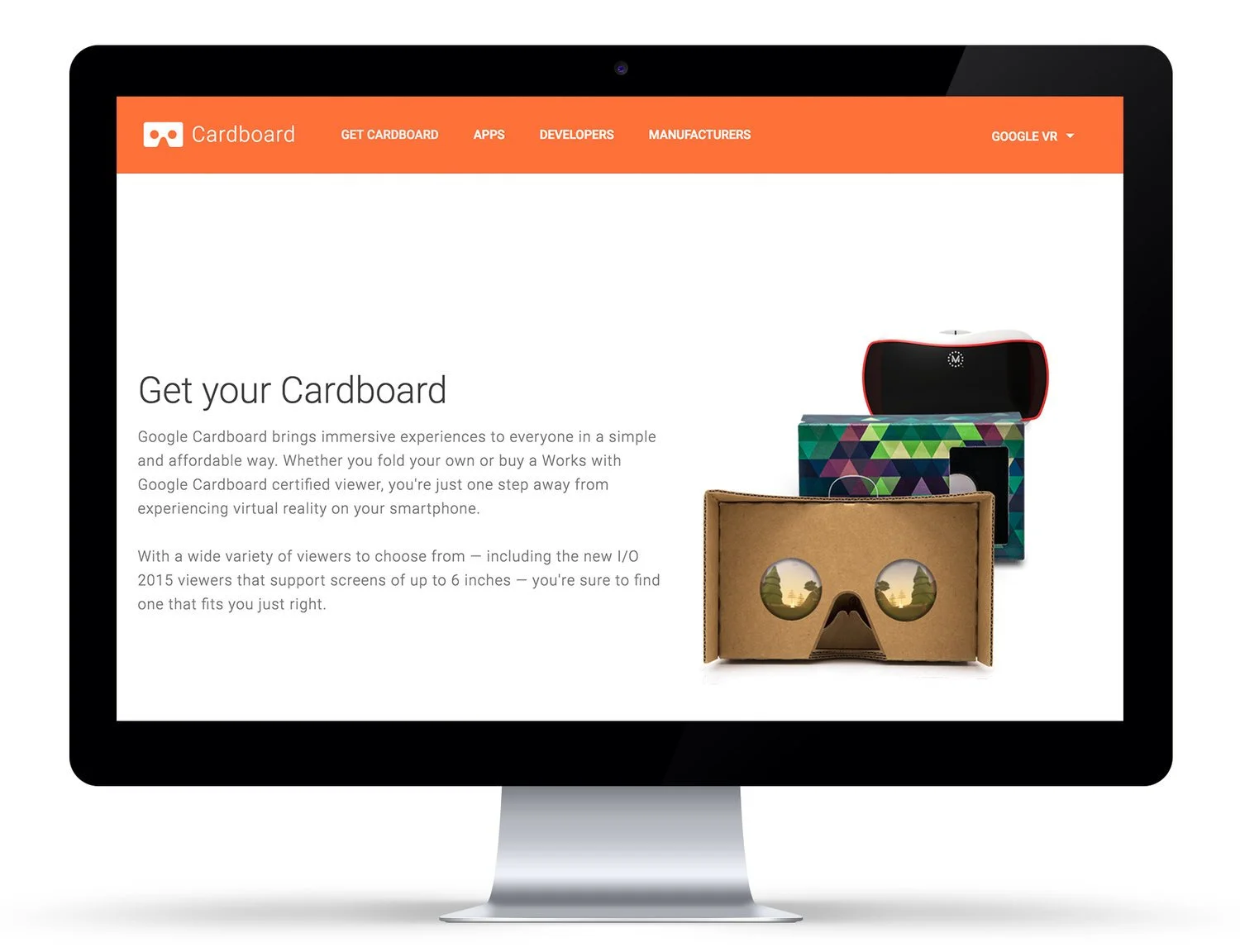



CARDBOARD
Role: Copy Lead
The opportunity: Google Cardboard was created to make virtual reality accessible to everyone—just fold up some cardboard, insert your phone, and you're in. Our task: launch the official website to support this groundbreaking product, help users understand how it works, and inspire developers and creators to build for it.
The solution: Explain VR in a way that was simple, tangible, and inspiring, all while positioning Cardboard as more than a toy—it was a gateway to a new dimension of storytelling and exploration. We created a site that was just as inventive and user-friendly as the product itself. The design leaned into playful simplicity and clear education, walking users through every aspect of the experience—from assembly to app discovery to developer tools. Key elements included:
A clean, modular layout that made how it works instantly understandable
Rich product imagery and subtle motion to bring the tactile experience to life
An intuitive "Get Cardboard" path connecting users with certified manufacturers
A compelling developer section that showcased the open-source potential of the platform
The impact: The Cardboard site launch created a global entry point for VR:
Over 10 million Cardboard viewers distributed globally within the first year
More than 160 million app installs for Cardboard-compatible VR experiences
Site traffic surged to millions of visitors within the first 6 months
Supported the release of over 1,000 Cardboard-compatible apps across Android and iOS
Cardboard helped spark Google’s next generation of VR tools, including Daydream and Expeditions
Why it matters: This wasn’t just a product launch—it was the start of a movement. The Cardboard website became a portal to VR for the masses, removing complexity and replacing it with curiosity, creativity, and accessibility. It proved that with the right design, even the future of immersive tech could start with a simple fold of cardboard.
